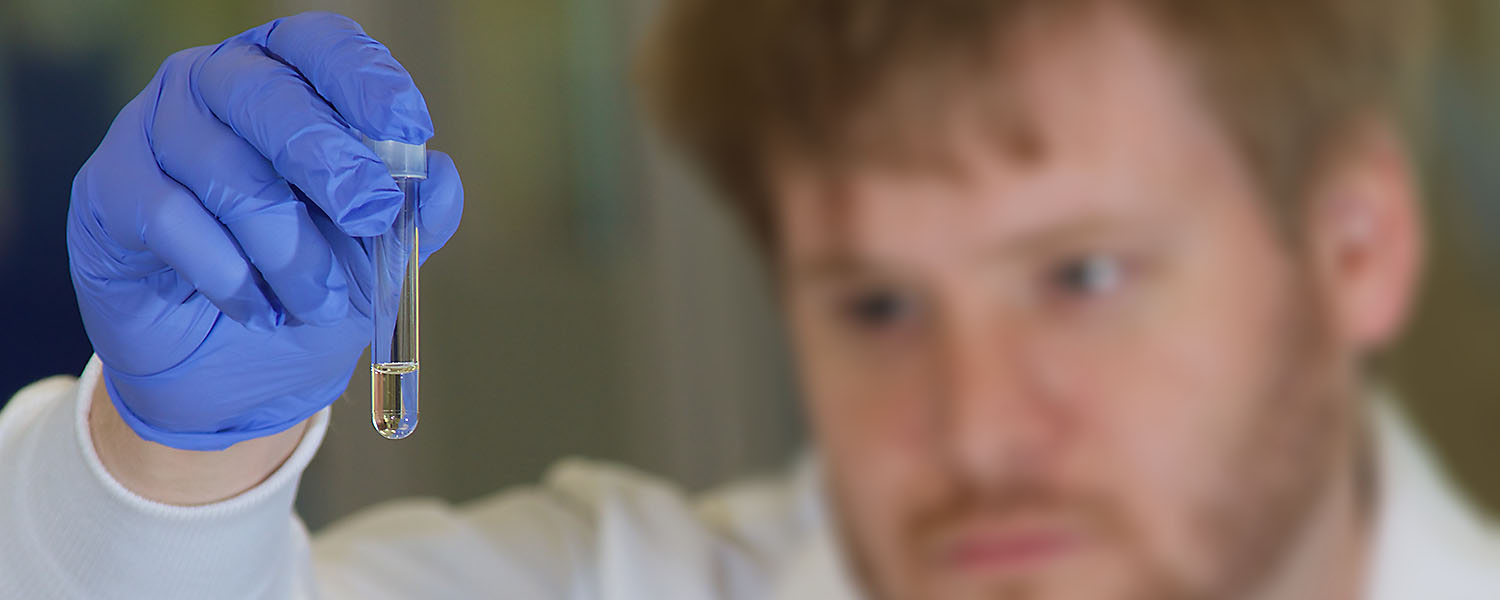Research Overview

More than 40 faculty members in the Department of Genetics and Biochemistry direct the research of about 50 graduate students. The research activities of the faculty include genetic disorders, genetic improvement of crops, strategies for drug development and eukaryotic pathogens. Clemson University has dedicated its resources to providing cutting-edge facilities equipped with all the conventional instrumentation required for modern genetic and biochemical analysis.
Research Areas and Resources
-
Cell Signaling and Signal Transduction
- Stephen Dolan: Polymicrobial interactions during infection.
- Hong Luo: Plant genetics and biotechnology
- Jennifer Mason: DNA damage, repair and replication.
- James Morris: Nutrient sensing and regulation of parasite development.
- Meredith Morris: Microbial cell biology.
- Shahid M. Mukhtar: Plant functional genomics and systems biology.
- Kimberly Paul: Microbial biochemistry.
-
DNA Damage and Repair
- Weiguo Cao: DNA damage and repair.
- Jennifer Mason: DNA damage, repair and replication.
- Michael Sehorn: DNA repair and recombination.
-
Genetics of Complex Traits
- Robert Anholt: Behavioral neurogenetics.
- Zhana Duren: Computational methods in systems genetics.
- F. Alex Feltus: Systems genetics of humans and plants.
- Shyamalika Gopalan: Population and quantitative genetics of complex human traits.
- James Lewis: Population genetics and functional genomics of adaptive traits.
- Trudy Mackay: Systems genetics of quantitative traits.
- Fabio Morgante: Statistical genetics.
- Shahid M. Mukhtar: Plant functional genomics and systems biology.
- Rajandeep Sekhon: Plant molecular genetics and genomics.
- Alison Starr-Moss: Canine genetics.
- Liangjiang Wang: Genomic data mining and non-coding RNA biology.
-
Genomics and Bioinformatics
- Andrei Alexandrov: Disease-associated human RNA pathways.
- Kelsey Witt Dillon: Ancient DNA and computational population genomics.
- Stephen Dolan: Polymicrobial interactions during infection.
- Zhana Duren: Computational methods in systems genetics.
- F. Alex Feltus: Bioinformatics computational biology and cyberinfrastructure.
- Shyamalika Gopalan: Population and quantitative genetics of complex human traits.
- Miriam Konkel: Mobile elements in primate genomes.
- James Lewis: Population genetics and functional genomics of adaptive traits.
- Fabio Morgante: Statistical genetics.
- Shahid M. Mukhtar: Plant functional genomics and systems biology.
- Liangjiang Wang: Genomic data mining and non-coding RNA biology.
-
Macromolecular Structure and Function
- Andrei Alexandrov: Functional mapping of druggable sites.
- Weiguo Cao: DNA damage and repair.
- Stephen Dolan: Polymicrobial interactions during infection.
- Manuel Fierro: Molecular prasitology of malaria parasites.
- Cheryl Ingram-Smith: Microbial biochemistry.
- Lela Lackey: Structure/function of RNAs.
- James Morris: Target-based drug discovery.
- Michael Sehorn: DNA repair and recombination.
- Kerry Smith: Fungal metabolism and protein biochemistry.
-
Microbial Pathogenesis
- Stephen Dolan: Polymicrobial interactions during infection.
- Cheryl Ingram-Smith: Microbial biochemistry.
- Lukasz Kozubowski: Fungal cell biology and pathogenesis.
- James Morris: Target-based drug discovery.
- Meredith Morris: Microbial biochemistry and cell biology.
- Kimberly Paul: Microbial biochemistry.
- Michael Sehorn: Microbial biochemistry.
- Kerry Smith: Fungal metabolism and protein biochemistry.
-
Plant Genetics and Biochemistry
- F. Alex Feltus: Plant systems genetics.
- Amy Lawton-Rauh: Population genomics.
- Haiying Liang: Woody plant genetics.
- Hong Luo: Plant genetics and biotechnology.
- Shahid M. Mukhtar: Plant functional genomics and systems biology.
- Rajandeep Sekhon: Plant molecular genetics and genomics.
Chemical Hygiene Plan
The Occupational Safety and Health Administration’s regulation for occupational exposures to hazardous chemicals in laboratories requires that all facilities engaged in the laboratory use of hazardous chemicals develop and implement a written chemical hygiene plan, which sets forth procedures, equipment, personal protective equipment, work practices and policies that when implemented and used properly will protect employees from the health hazards presented by hazardous chemicals used in their workplace.
